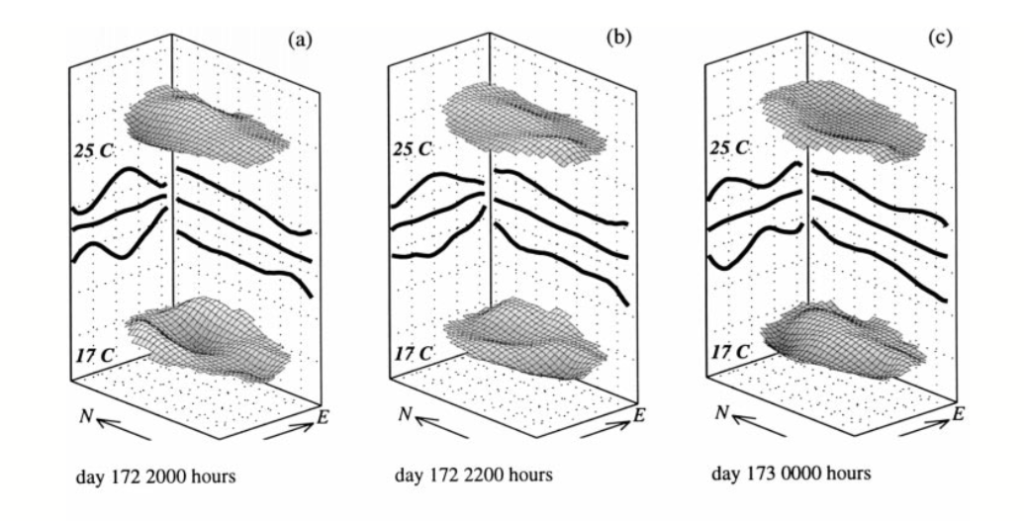Modeling basin-scale internal waves in a stratified lake
ABSTRACT: Basin—scale internal waves provide the driving forces for vertical and horizontal fluxes in a stratified lake below the wind‐mixed layer. Thus, correct modeling of lake mixing and transport requires accurate modeling of basin‐scale internal waves: examining this capability with a hydrostatic, z‐coordinate three‐dimensional (3D) numerical model at coarse grid resolutions is the focus of this paper. It is demonstrated that capturing the correct thermocline forcing with a 3D mixed‐layer model for surface dynamics results in a good representation of low‐frequency internal wave dynamics. The 3D estuary and lake computer model ELCOM is applied to modeling Lake Kinneret, Israel, and is compared with field data under summer stratification conditions to identify and illustrate the spatial structure of the lowest‐mode basin‐scale Kelvin and Poincaré waves that provide the largest two peaks in the internal wave energy spectra. The model solves the unsteady Reynolds‐averaged Navier‐Stokes equations using a semi‐implicit method similar to the momentum solution in the TRIM code with the addition of quadratic Euler‐Lagrange dis‐cretization, scalar (e.g., temperature) transport using a conservative flux‐limited approach, and elimination of vertical diffusion terms in the governing equations. A detailed description is provided of turbulence closure for the vertical Reynolds stress terms and vertical turbulent transport using a 3D mixed‐layer model parameterized on wind and shear energy fluxes instead of the convential eddy viscosity/diffusivity assumption. This approach gives a good representation of the depth of the mixed‐layer at coarse vertical grid resolutions that allows the internal waves to be energized correctly at the basin scale.
EXTRACT: Section of Figure 11:

Figure 11: Modeled evolution of 12-h-period, horizontal-mode-two, vertical-mode-two Poincare wave in Lake Kinneret over one period. The mode-one seiche has been subtracted from band-pass filtered isosurfaces to isolate the mode-two behavior. The spatial means of the filtered, mode-two isosurfaces at 17, 21, and 258C in the EW and NS directions are shown as solid lines. The progressive EW propagation of the mode-two Poincare wave is clearly visible.
